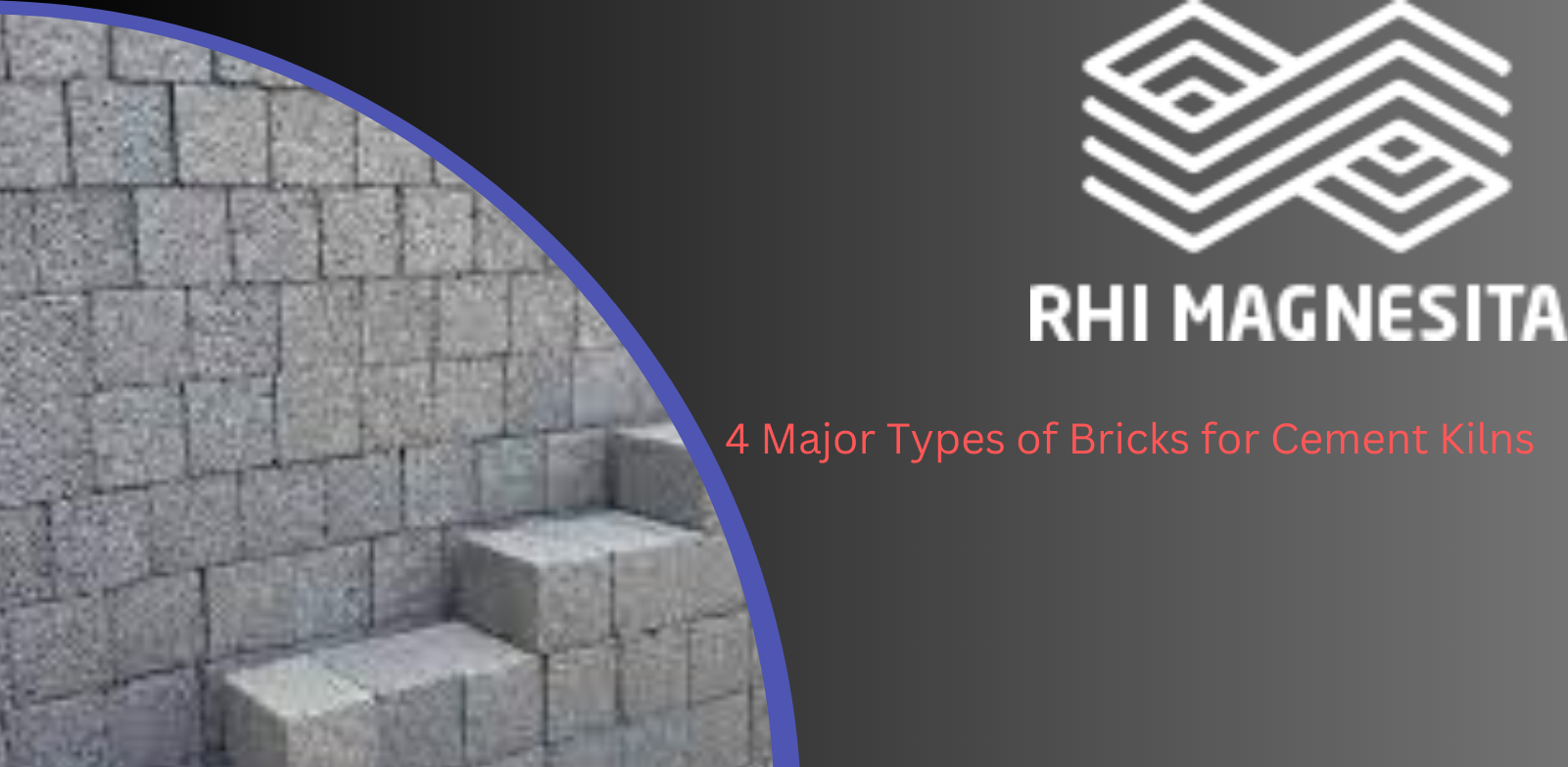
Cement manufacturing is an energy-intensive process, and energy is a significant cost factor in it. Apart from containing the temperature and harsh environment, the refractory needs to ensure the minimum loss of energy to make the process energy efficient. Refractories utilized in the furnace, cooler, and preheater are provided either as fired bricks, unshaped as solid items or in pre-projected, pre-fired shapes.
The rotating furnace is as a rule fixed with bricks, while the preheater, cooler, and gas channels are normally fixed with castables, plastics, or pre-projected shapes held in place by metal or earthenware anchors joined to the shell. Bricks are characterized into four significant groups as per their composition: essential, high alumina, fire-clay, and special materials.
Types of Refractories for Cement Kilns
-
Fundamental Bricks
Fundamental bricks have magnesia or dolomite as their principal component and an optional mineral like alumina, zircon, or spinel as a minor part. In many instances, the significant component concentration differs somewhere in the range of 60% and 95% by mass.
Natural resources of magnesia or dolomite of refractory quality are tracked down in not many countries all over the planet. The majority of the magnesia utilized in the cement refractory furnace bricks comes from seawater or saltwater deposits. These are called manufactured magnesia or periclase sinters. Only magnesia isn't utilized in kiln brick-making on account of its poor thermal cycling properties. Therefore, magnesia is mixed with an optional mineral before it is pressed and fired into bricks. The optional mineral gives heat shock properties or adjusted compound-appropriate properties to the brick.
Chromium ores were generally utilized as auxiliary minerals in magnesia bricks, yet removal issues brought about by hexavalent chromium rendered these items an unattractive choice in many countries. Subsequently, magnesia-chromium products were supplanted with magnesia-alumina spinel products. Even though magnesia-alumina spinel products don't present the superb coating ability of their predecessors, their heat-spalling resistance and salt obstruction far surpass those of chromium-containing products. Magnesia-spinel products additionally oppose decreasing conditions better than magnesia-chromium products.
As a result, magnesia-chromium products were replaced with magnesia-alumina spinel products. Although magnesia-alumina spinel products do not present the excellent compatibility of their predecessors, their thermal spalling resistance and alkali resistance far exceed those of chromium-containing products. Magnesia-spinel products also resist reducing conditions better than magnesia-chromium products.
-
High-Alumina Bricks
High-alumina products utilized in refractory cement furnaces differ in alumina content from half to 85% by mass. Contingent upon the kind of unrefined substance utilized in their making, high-alumina products of a similar class present wide contrasts in properties as well as cost. To expect that all 70% of alumina bricks are simply commodities is a very risky speculation. For example, a mullite-based product presents more noteworthy thermal shock obstruction than its bauxite partner. Essentially, a 60% andalusite brick resists salt assault far superior to its 60% bauxite counterpart.
Higher alumina products, for example, 80% or 85% are at times utilized in the release zone of the furnace due to their unrivalled mechanical strength and abrasion resistance. These bricks oftentimes contain 1% to 3% phosphorus pentoxide to work on their hot strength and abrasion resistance. Phosphate additions have a massive effect on the stress-strain conduct of the product. Some phosphate-reinforced bricks are oven-cured instead of firing at high temperatures. These products present preferred layered resistances over their fired reciprocals and are called artificially reinforced bricks, instead of ceramic-bonded or clay-bonded. In the calcining zone of the furnace, 70% alumina is the favoured decision except if the salt assault is serious to the point that a lower alumina product is required.
-
Fireclay Bricks
As indicated by their alumina content, refractoriness, and porosity, fireclay products are considered to be high-duty, super duty and semi-silica. Albeit generally utilized in the upper piece of the calcining zone in the past, high-duty and super-duty bricks are slowly being supplanted by high-alumina and semi-silica products. One reason is the trouble of keeping fireclay brick resistances within satisfactory cutoff points. Another reason is the loss of strength at higher working temperatures. When kilns are upset, fireclay products react with the kiln load, resulting in abrupt lining failure.
Although semi-insulating products are very low in mechanical strength, they have a great ability to react with alkali vapours in the kiln. This way they create a thin glaze which safeguards them from abrasion as well as chemical attack. Their low thermal conductivity brings down kiln shell temperature, which is the most significant advantage over tires. For great performance, these lightweight products need to be strategically installed with mortar. When choosing a semi-insulating product, sufficient attention should be given to its thermal expansion properties. It is important because some products might shrink at temperatures above 1000°C, causing a high risk in pre calcining kilns.
-
Carbide and Zircon Bricks
In some very special situations, zircon and silicon carbide bricks can also be utilized in the kiln while aiming at reducing ring formation in the calcining zone. Zircon bricks tend to react with the clinker liquid phase when they are installed in very close proximity to the burning zone. In the same way, silicon carbide bricks also react very promptly with oxygen at high temperatures, particularly when alkali or steam is present. Moreover, silicon carbide offers very high thermal conductivity as well as low thermal expansion.
Concluding Remarks
RHI Magnesita India is India’s top supplier of high-grade refractory products, systems and solutions, indispensable for industrial high-temperature processes exceeding 1,200°C. These high-performance solutions find applications in a wide range of industries including non-ferrous metals and glass, steel, and cement. The company is the single refractory solutions platform offering the most comprehensive range of refractories. The product range includes Magnesia and Alumina-based bricks as well as mixes for large industrial customers. Right since its inception, the company has been a frontrunner concerning all the leading innovations within the field and always strives hard to come up with new kinds of products. For more details, get in touch with the company.